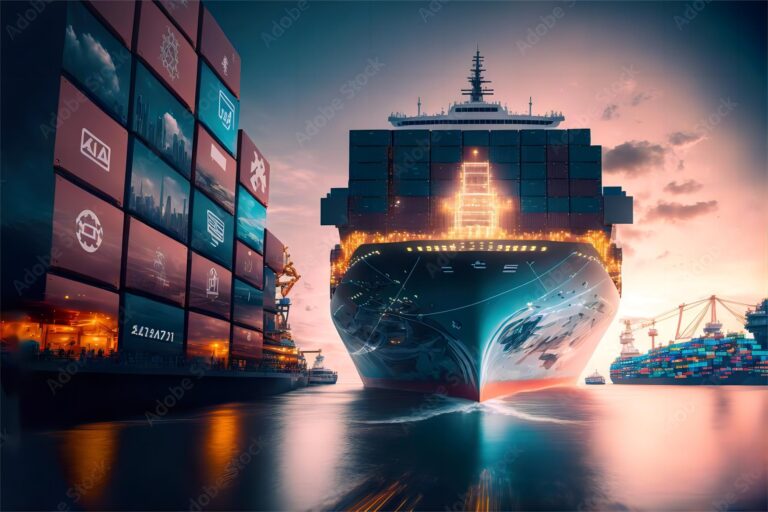- By TOP CHINA FREIGHT
- February 18, 2025
- Term

In today’s interconnected world, international freight plays a crucial role in global trade. From consumer goods to industrial equipment, everything is moved across borders, linking countries and economies together. However, the process of shipping goods internationally can often be complex, time-consuming, and expensive. To keep up with the increasing demand and competition, it’s essential to focus on making international freight more efficient.
In this article, we’ll explore some practical strategies to improve the efficiency of international freight and ensure your shipments move faster, more cost-effectively, and with less hassle.
Make International Freight More Efficient
1. Streamlining the Documentation Process
International freight involves a lot of paperwork, including customs declarations, bills of lading, invoices, and other regulatory documents. Errors in these documents can delay shipments, result in fines, or cause goods to be held at customs.
Strategy: Digitizing and automating the documentation process can significantly reduce the time spent on paperwork. Implementing software solutions that allow for electronic document submission, tracking, and management can streamline the process. By reducing human error and making data accessible in real-time, you can save valuable time and money.
2. Optimizing Shipping Routes
The efficiency of international freight largely depends on the routes chosen for shipments. Whether by air, sea, or land, optimizing shipping routes can lead to faster delivery times and reduced costs.
Strategy: Using data analytics and route optimization tools can help identify the most efficient paths for shipping. These tools consider factors such as weather, customs regulations, port congestion, and carrier schedules to suggest the best routes. By adjusting shipping routes based on real-time data, businesses can minimize delays and improve overall efficiency.
3. Consolidating Shipments
Shipping goods individually can be expensive and inefficient. Instead, consolidating smaller shipments into one larger load can reduce transportation costs and improve logistics efficiency.
Strategy: Partnering with freight forwarders who specialize in consolidation can help. They combine smaller shipments into a single container or load, reducing both transportation costs and handling time. This strategy is particularly effective for businesses with less-than-container-load (LCL) shipments.
4. Embracing Technology for Real-Time Tracking
Tracking the movement of goods in real-time is essential for maintaining control over shipments and ensuring timely delivery. Without real-time tracking, businesses are often left in the dark about the location of their shipments.
Strategy: Implementing GPS and RFID technologies can allow businesses to track shipments at every stage of the journey. With real-time visibility, you can identify any delays or issues as they arise and take corrective actions immediately. This enhances overall operational efficiency and helps you manage customer expectations more effectively.
5. Selecting the Right Freight Forwarder
A reliable freight forwarder is a cornerstone of efficient international shipping. Freight forwarders act as intermediaries between the shipper and the carrier, managing logistics, documentation, and compliance.
Strategy: When choosing a freight forwarder, it’s essential to consider their expertise in handling the specific type of goods you’re shipping, as well as their reputation for reliability and speed. A good freight forwarder will not only help streamline the shipping process but also advise you on the most efficient and cost-effective methods for international freight.
6. Reducing Customs Delays
Customs is often a major bottleneck in international shipping. Delays in clearing goods through customs can result in late deliveries, additional fees, and inventory shortages.
Strategy: Working with a customs broker who understands the specific requirements of each destination country can help speed up the customs clearance process. Providing accurate and complete documentation, as well as ensuring compliance with local regulations, can minimize the risk of delays. It’s also wise to stay updated on any changes in customs rules and tariffs that could impact your shipments.
7. Leveraging Sustainable Shipping Practices
In recent years, sustainability has become a key focus for businesses and consumers alike. Eco-friendly shipping methods not only help reduce environmental impact but can also improve efficiency by utilizing less fuel and resources.
Strategy: Consider using more sustainable transportation options, such as using sea freight instead of air freight for longer distances or using electric trucks for local deliveries. Optimizing packaging to reduce waste and improve space utilization can also help minimize the carbon footprint of each shipment.
8. Collaborating with Global Partners
Building strong relationships with international suppliers, distributors, and logistics partners can help improve the overall efficiency of your supply chain. With reliable partners, you can access better shipping rates, faster transit times, and more reliable service.
Strategy: Foster communication with your global partners to ensure a smooth and efficient shipping process. Regularly reviewing and optimizing your supply chain with your partners can lead to reduced lead times, better inventory management, and increased overall efficiency.


The efficiency of international freight is crucial for businesses looking to stay competitive in the global marketplace. By implementing strategies such as streamlining documentation, optimizing shipping routes, consolidating shipments, embracing real-time tracking, selecting the right freight forwarder, reducing customs delays, leveraging sustainable practices, and collaborating with global partners, businesses can improve their logistics operations and reduce costs.
As the world continues to grow more connected, efficient international freight will be at the heart of business success. By making these improvements, you can ensure that your shipments reach their destinations on time, on budget, and without unnecessary complications.
